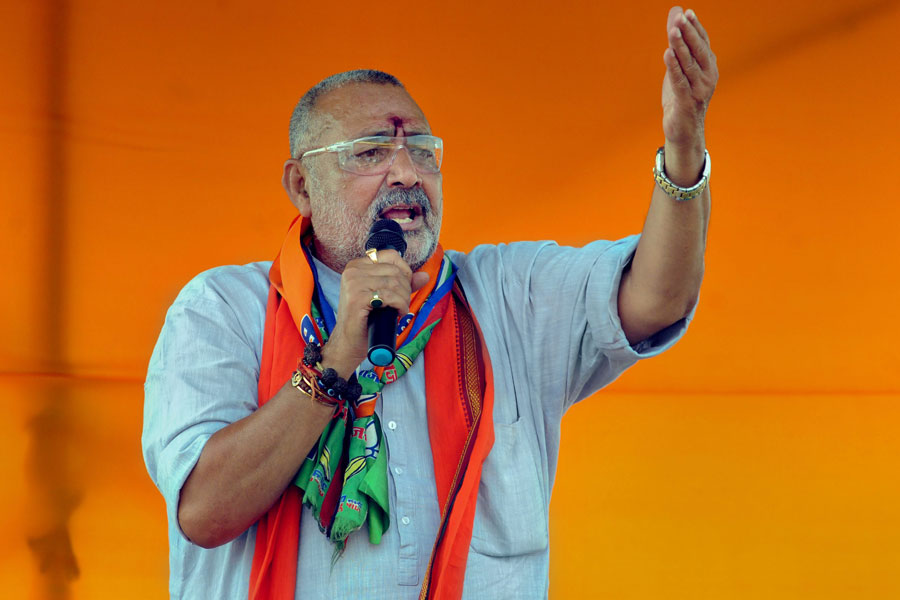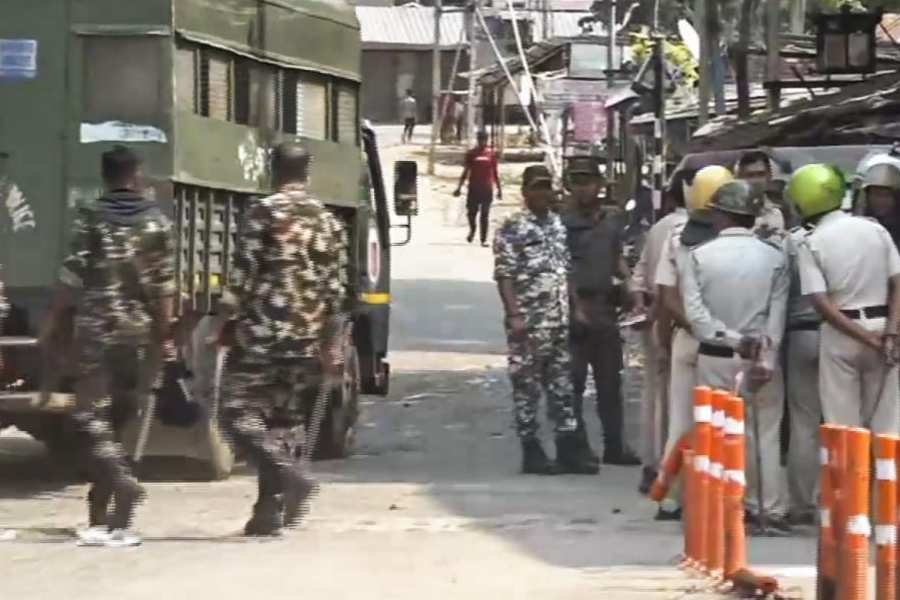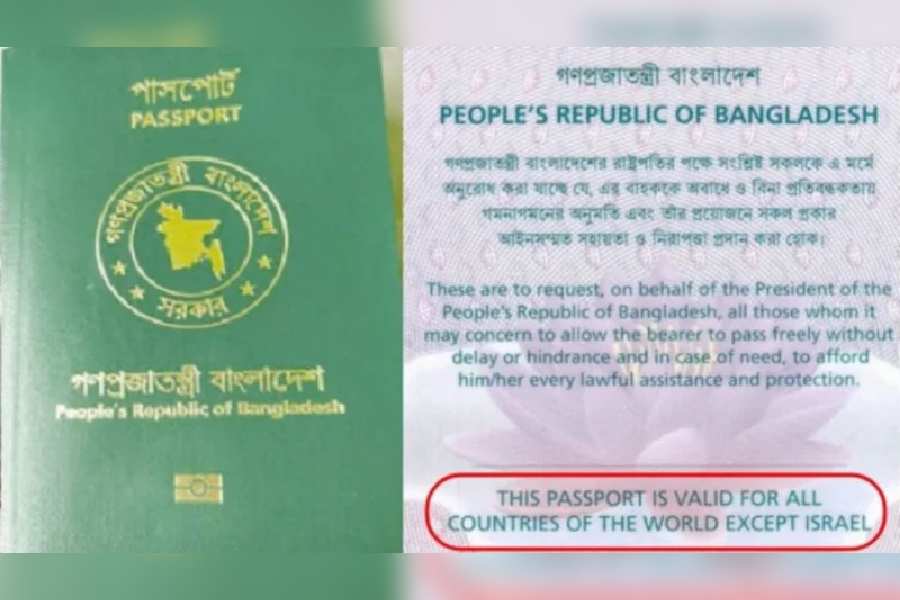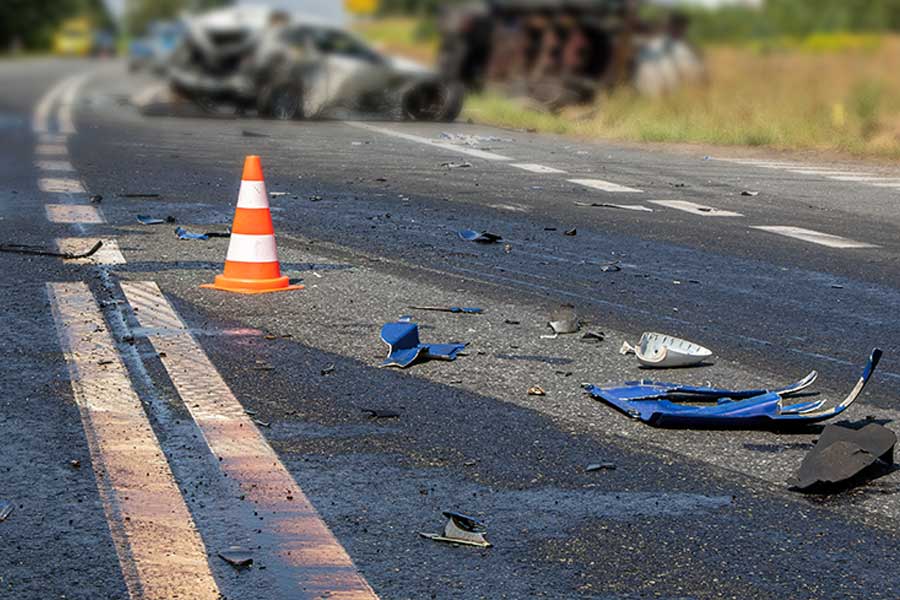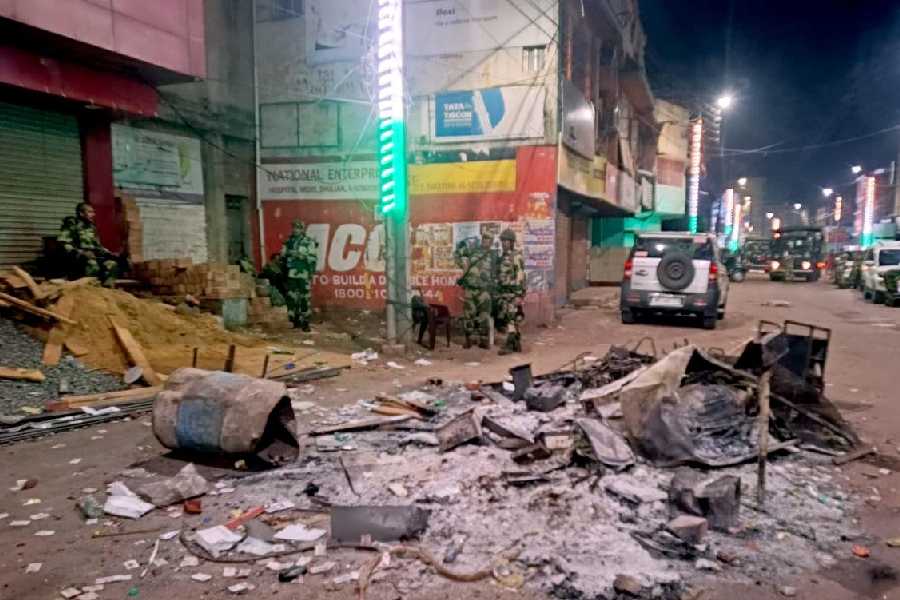Sitting across the table in her Sarva Shiksha Mission office in Kasba, a few weeks after she was inducted into The Hall of Fame at the first edition of The Telegraph She Awards, it is impossible to shake off the sense of awe Sister Cyril inspires. Sixty years after she first came to India, Metro revisits the remarkable story of Sister Cyril, in her own words, told with a twinkle in those kind but strict eyes.
I am a Loreto sister. I entered in 1953 and after my training in 1956 I was posted to India. I arrived in India on October 24, 1956. We travelled by train two days and two nights across from Mumbai to Calcutta. I spent my time hanging out of the window looking at everything. They tell me I arrived in Calcutta covered in coal dust!

.jpg)
My first experience was that I had to have my appendix taken out at Harrington Hospital. I worked in Loreto Entally from January till May that year and then I was sent to Darjeeling, because they thought that young sisters coming from Ireland wouldn’t be able to manage the heat.
From there I was transferred to Lucknow. I went across the country in what was called the Blue Train to Lucknow. I was in Lucknow from 1957 until 1971. That was a long stretch. During that time I taught in the school and also did my studies. I have a doctorate in endocrinology from Lucknow University.
I had come to India to help with the education of children who were poor. I began to get agitated about doing something
It was in Lucknow that I first got the idea of working with the poor children. I was asked by Mother Palmer, who was the Superior at the time, to start a league of goodness, or the LTS (Leadership Training Service) and I started that in Loreto Convent, Lucknow. One of the things we were supposed to do was see, judge, act. I thought about what we could see and I realised that we were all boarders, all living on the lovely campus, there was nothing else to see. So I said let’s go out and we went out on the road.
I came across poverty such as I couldn’t even believe existed. I started asking myself, what am I doing here in India? I had come out here to work with people and to help with the education of children who were poor and here I was working in Loreto Convent in Lucknow, which had a beautiful campus and beautiful children, whose parents were well off and who had good values.
I began to get agitated about doing something. So, we brought in the poor children in the afternoons and did classes with them. None of them were in school. We began to teach them on a daily basis. But I wasn’t satisfied with that. I felt that these children have the same rights as everybody else. Just because some people have money and some people don’t, you shouldn’t have these differences. The practice built up and now they have a whole school called Jagriti where the poor children are taught. In those days there was no separate space. They just came in the afternoons and sat in the classrooms and the girls who were boarders came and helped to teach them.
I was then transferred to Shimla for a year. Shimla was a very well established place at that time and the only poor people there were the coolies, but none of them had families there. They were migrant labourers.
The girls went home filthy, dirty and black, but no one complained. For the first time, they got a vision of what poverty really meant
In 1973, I was transferred back to Calcutta, to Loreto House, where I took over as headmistress. I had the opportunity to work with just the regular children of the school, most of whom were well-off students and some poor ones.
I started reaching out to the poor children here. They came in, in the afternoons, and the regular school children stayed back and taught them.
That was also the time I organised a massive exhibition on the difference between the rich and the poor, to give the girls of Loreto House a sense of what they were already so very privileged to get and that it was time for them to share it with other people.
It was a huge exhibition, organised in 1978. It was very successful. We studied the difference in salaries and difference in responsibilities. We visited hospitals, both well-off ones and poor hospitals, to see the difference. I guided the students but they did the whole survey themselves. They did all the charts, which were put up for the exhibition at Loreto House and other schools were also invited.
Before they came out of the exhibition at the end there was a prayer room that everyone had to go through. They were asked to sit for five minutes and reflect on what they had seen in the exhibition and decide what they wanted to do in the future. Every child, Class V onwards, spent 15 minutes room praying that it would touch everybody else’s hearts.
The whole exhibition was geared to sensitise the children about the conditions around them. In those days nobody was thinking about the poor people.
I became the vice-principal of Loreto House and we went out into the villages to teach. St. Paul’s Cathedral had a very big slum dwelling presence in those days and I organised some of our students to visit their schools. I wanted the Loreto House girls to have that experience. This was before the exhibition. I got some of the BEd girls to go with them as chaperones.

In the morning we were all ready to go and the heavens opened and the rain came down. Mother Superior told me we couldn’t send the children out in the rain as they would be drenched and get sick. I pleaded with her but she said no. I had a vision of all those poor little things in the slums waiting in their classrooms for these grand girls to come. I kept thinking this couldn’t happen and that they would think terrible thoughts about us. So I went back seven times to Mother Superior pleading with her. Eventually she said okay, but promise me that the children won’t get wet and I went ‘yes, yes, yes, yes’. I raced down the stairs asking the children to get into the cars fast, before anybody could change their mind.
They came back at the end of the day absolutely thick with mud. Back in those days the slums used to be knee-deep in mud. The girls all came back wanting to go home to their mothers. They didn’t know how the rest of the city lived. This was the first time their eyes were opened and they saw what was happening. They went home filthy, dirty and black, but no one complained. That was really the beginning. They really got a vision of what poverty really meant.
A Catholic lady came with her daughter and in the slum she had a neighbour who had a little Muslim girl the same age. I took her in. That was the beginning
In 1978, I was transferred to Loreto Day School, Sealdah, where I was made principal. So I didn’t have to take permission from anyone to do anything. I discovered that many, children were not getting into English-medium schools because of the fees.
I had it announced in the church that we would be taking in poor Catholic children. A Catholic lady came with her daughter and in the slum where she came from she had a neighbour who had a little Muslim girl the same age. The Muslim girl’s mother told the Catholic lady that if she took her daughter along “Sister” might take pity on her. I took her in. That was the beginning. The rest of the slum dwellers could see that this was a school where it didn’t matter that you didn’t know English and where they might have a chance.
People started flocking in. What I did was every time during admission, I took 50 percent poor students and 50 percent from the well-off families because I needed the money to pay the teachers their salaries. That is how we became a 50 per cent poor and 50 per cent well-off school. They all came in on the same lottery system and the senior girls would sit down and help the slum dwellers fill up the forms. There was no discrimination. I didn’t have any test in English because many didn’t know English.
When I joined, the school already had 700 children paying full fees and there were 30 very poor children and out of those 30 most were Catholic. Slowly the number of poor children built up over the years to 700 and we ended up with a total of 1,400 children.
I never faced any resistance from the parents of the well-off students because I took the trouble to hold parent-teacher meetings to explain what I was doing. In one of the meetings, I asked the parents what they really wanted for their children from the school. They said lovely things like good citizenship, sense of service and patriotism and I put them all up on a board and explained how all the programmes we undertook would make all they wanted possible for their children.
I wanted to do whatever I could so that our school would become a resource centre for the poorest. And that is what happened.
Come as you are and stay as you are and if you want to run away, run away... nobody is forcing you. The result is that nobody ever ran away
The Rainbow Project was named by the girls in the school. I used to call them street children but the girls said, ‘When we come in you don’t call us Salt Lake children or Topsia children, why should you call them street children?’. They said since our school was divided into four colours and since these street children united all of them they should be called rainbows. It was a lovely thought and you can never really pin down a rainbow, only relate to it.
When the Rainbow children started to come in off the streets things slowly began to change. When they came in they were filthy and dirty. But I never said a word. We just gave them soap and a place to bathe, and fresh clothes.
A lot of things happen by osmosis. They were coming into a school that was very clean with well-behaved children and they just accepted that and became a part of it. Very often they didn’t even come into the classes. They would just stand on the stairs and watch how I dealt with people. They watched everything, went and tasted the food, and if everything was suitable then they would stay. I never made any fuss. Come as you are and stay as you are and if you want to run away, run away, I wouldn’t come after you and nobody is forcing you. The result is that nobody ever ran away.
Most of these children would have to be readied before they could be admitted to a suitable class because they had never been to school before. They were all inducted into the Rainbow Programme. When they came in we had a special place for them on the roof and we put the work education classes end to end so that for every single period there were 40 potential teachers among the children. They would teach and do the letters with them till they were literate and then get them on to the regular books and then bring them up to the level where they would fit in. If they were very old, say 11 or 12, we did it in Bengali because they wouldn’t pick up English and would get fed up. If they came in very young we would put them straight into nursery.
Everybody clears out by 4 o’clock, and the school is empty till the next morning. It is such a terrible waste
of space. So, I took in more children for Rainbow Homes
Around 1983, one little girl who was sleeping on the road with her family went across into NRS Hospital to go to the toilet and somebody raped her. She was only three. She lost a lot of blood and was taken into NRS Hospital. When she was discharged I persuaded the mother to let her stay with me.
She was the beginning of the Rainbow Homes. I began with 10 or 12 girls who needed to stay in because I became aware of how dangerous it was for them, the girls in particular. The first few nights I put them to sleep down in the library on mats.
When that little girl came in I found them all sleeping around her with their hands on her. I asked them ‘What are you doing?’ and they said that ‘last night she woke up and started screaming, because of the trauma she had faced, and the only way we could get her quiet was to hold her’. So they were holding her from the beginning so that she didn’t wake them up.
That group grew up and more came in, and I realised that it was viable. You’ve got a big school, everybody clears out by 4 o’clock, and the school is empty till the next morning. It is such a terrible waste of space. Accordingly I took in more children. They did their own cooking, we had one domestic staff to help them. And it is still running. Now it has spread into all the Loreto schools. Many of these students go to other schools, to Bengali-medium ones, and then come back again. I think we have about 780 of them now over Loreto House, Loreto Dharamtala, Entally, Bowbazar and Sealdah. And now it has spread to other places as well and not necessarily run by the Loreto Sisters.
Many of them have completed their education, got their degrees, got jobs, got married and most of them seem to be very successful. Many of the students come back to me and many came back to the school as teachers.
They had four girls who had gone up to Class VII and two boys. We trained them in our Barefoot Teachers training programme. We ended up with about 2,500 to 3,000 children
We took on many other projects, some of which are still continuing. We had the Eastern Metropolitan Bypass Project. I used to wonder where all these children came from and I went down to the EM Bypass and found around 2,000 children. I asked their parents what they wanted most. I thought they were going to say give us sanitation or clean drinking water but they told me give them schools. They lived along the railway tracks and they said that they were afraid of sending their children on the railway tracks so they had to take them into the city. But since nobody would let them work with their children in tow, they would run around in the city getting lost.
So I asked them if they had anyone we could train and they told us that they had four girls who had gone up to Class VII and two boys. So we took them and trained them in our Barefoot Teachers training programme. We ended up with about 2,500 to 3,000 children. These young people we trained would take the children for lessons every morning and in the evening they gave adult literacy to the mothers when they came back from work.
After about two years we were able to start micro credit and they were able to make very nice handicrafts and that programme became independent. When the children emerged from the five-year primary school they were able to get them admitted into the secondary schools with money they had saved themselves. I think that was a great programme.
We got involved in the brickfields and trained people for that. We got involved with the District Primary Education Programme of the government. I went to the government authorities and said that if you are going to introduce it in the city we need to train the teachers properly and that I would like to offer to focus on the values of teachers. Through the Shikshalaya Prakalpa I must have trained around 15,000 teachers.
This was all while I was still principal at Loreto Sealdah. After I retired in 2012 the government invited me to the Sarva Shiksha Mission to assist them in setting up Rainbow Homes, like the ones I had set up in Loreto Sealdah and all the other Loreto schools. We set up 15 in the first round, by 2013. A second batch of 10 was commissioned by the central government and now we have 25. They come in droves now for admission to these homes because they get everything, books, clothes, food...
I don’t miss being principal because I have this work now and I have so many happy memories from my life and work here. In fact I have too many of them. I have just done my best. I have seized an opportunity whenever I saw it to get more children into school and to help them.
There is one message that I keep giving out hoping that one day someone will listen. We should change our students from competing with each other to get high marks to competing with themselves, because there are children getting damaged. And if we are really to have inclusive education, which means the 25 percent that the government has asked us to give to admit poor children into well-off schools, a lot of changes have to be made.
I just finished a book call Transforming Schools for Social Justice and Inclusive Schooling in which I have given a lot of directives about how to hold on to the poor children when they come in. Because when poor children come into a rich environment they get more damaged unless we ourselves change the environment to welcome them. Many of our schools don’t have an inclusive environment because children are being brought up to base their happiness on money. This will lead to a very unhappy society.
— AS TOLD TO
CHANDREYEE CHATTERJEE
I am thankful to Sister Cyril because.... Tell ttmetro@abpmail.com


